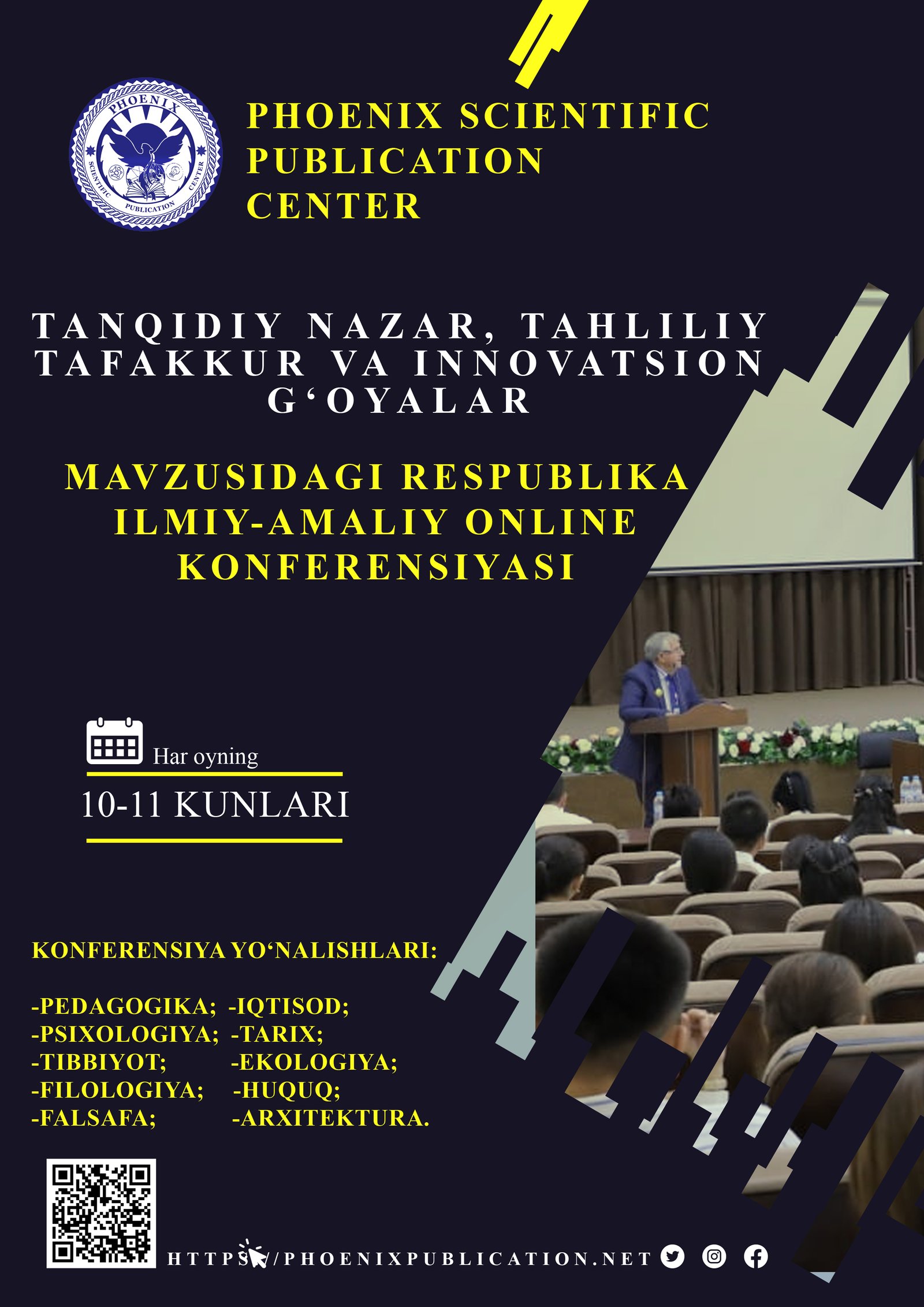Abstract
Mazkur maqolada emotsional komponentning mavjudligi yoki yo‘qligi nuqtai nazaridan leksik birliklarni quyidagi guruhlarga bo‘lish mumkinligi haqida so’z yuritadi: Masalan: salbiy, neytral va ijobiy. Aksariyat hollarda leksik birliklarning pragmatik ma’no turlari o‘rtasidagi yaqin munosabatni kuzatishimiz mumkinligi tahlil qilingan
References
1. Halliday, M. A. K. (1978). Language as Social Semiotic: The Social Interpretation of Language and Meaning. London: Edward Arnold.
2. Lakoff, G., & Johnson, M. (1980). Metaphors We Live By. Chicago: University of Chicago Press.
3. Damasio, A. (1999). The Feeling of What Happens: Body and Emotion in the Making of Consciousness. New York: Harcourt Brace.
4. Scherer, K. R., & Wallbott, H. G. (1994). Evidence for Universality and Cultural Variation of Differential Emotion Response Patterning. Journal of Personality and Social Psychology, 66(2), 310–328.
5. Pavlenko, A. (2005). Emotions and Multilingualism. Cambridge: Cambridge University Press.
6.Azamova G.S., Khojaliyev I.T. The concept of equivalence in translation and its interpretations. SCIENTIFIC BULLETIN OF THE TASHKENT STATE PEDAGOGICAL UNIVERSITY 2022.
7. A'zamova G. NATIONAL-CULTURAL NOTIONS AND THEIR COMBINATION IN ENGLISH AND UZBEK WORKS. https://internationaljournals.co.in/index.php/giirj/article/view/1599/1492
8.Hojaliyev, A'zamova G. Methodology and significance of meaning in translation of uzbek literature.
9.A'zamova G. SCIENTIFIC AND THEORETICAL FUNDAMENTALS OF COGNITIVE CONCEPT IN LINGUISTICS.
10.Г. Азамова. УЛУЧШЕНИЕ УСТНОЙ ПРАКТИКИ
